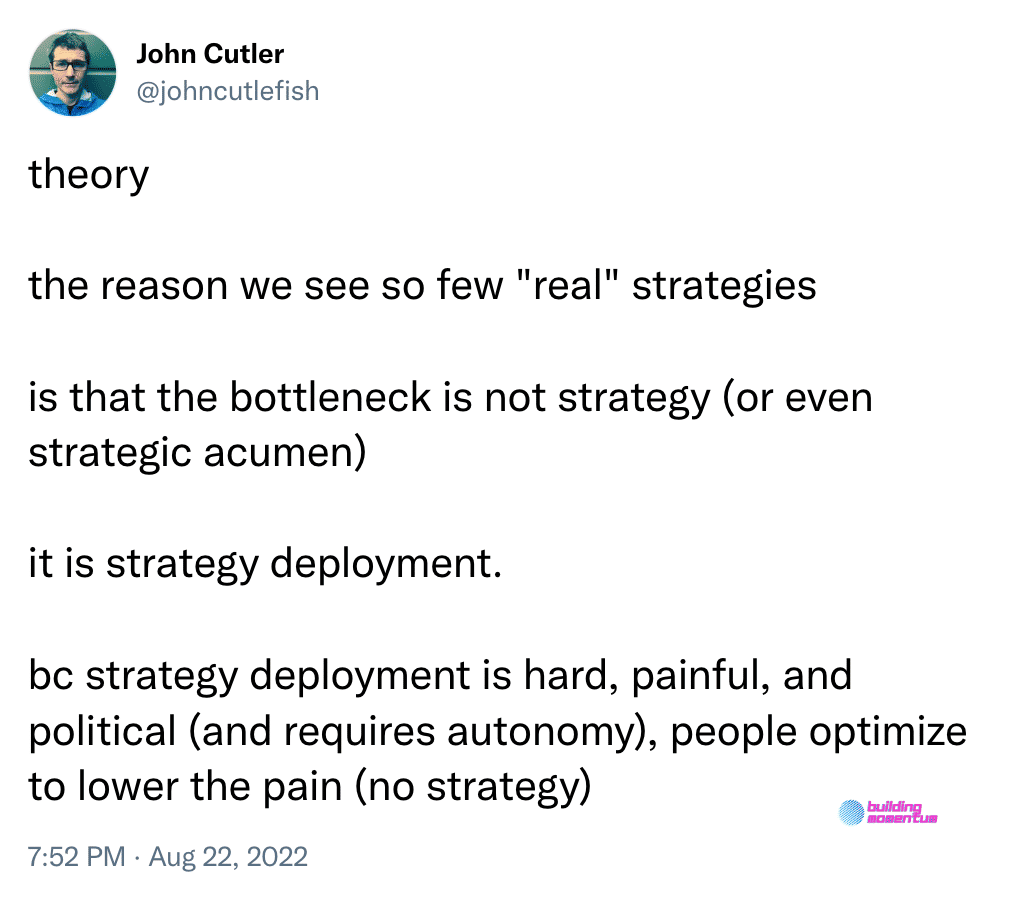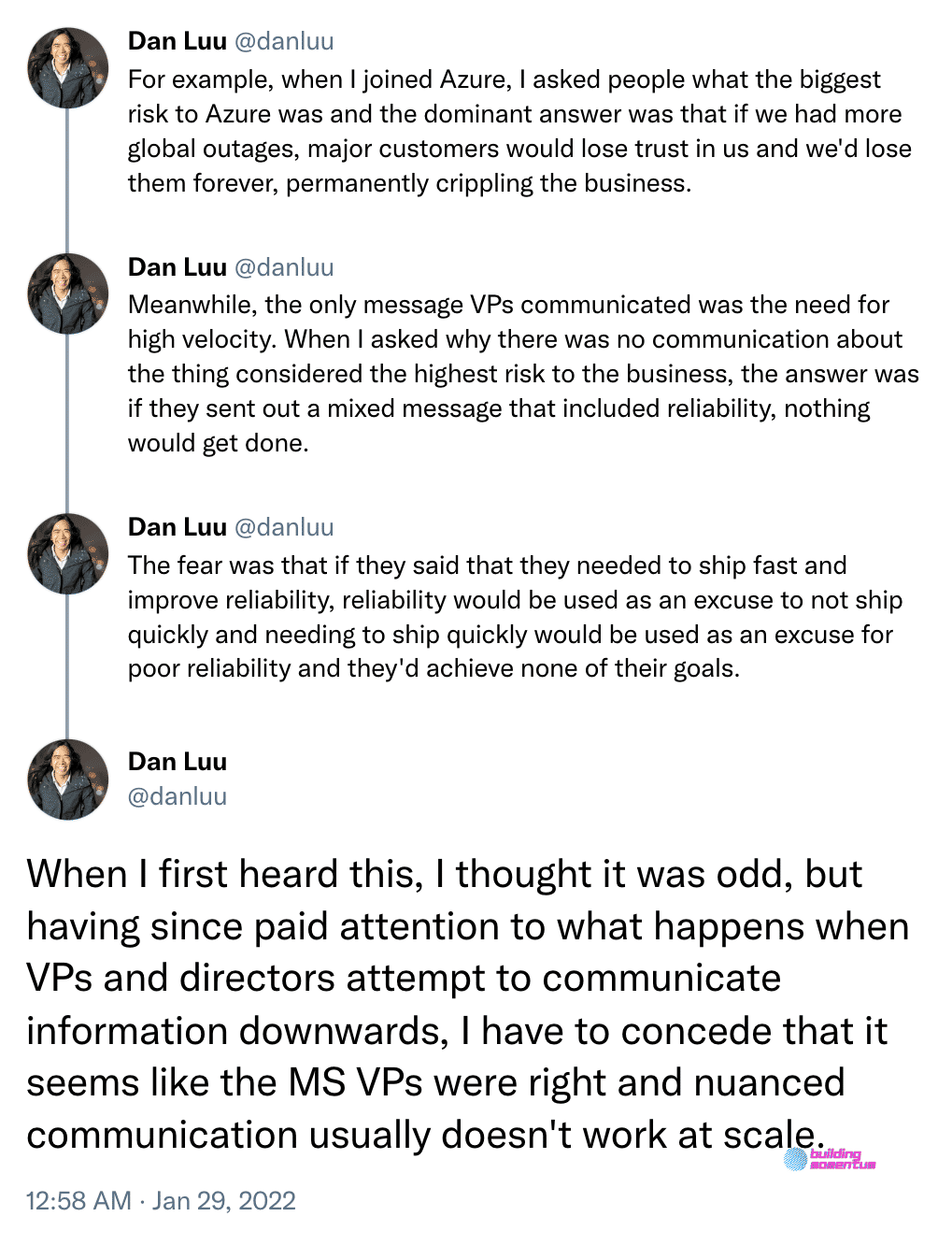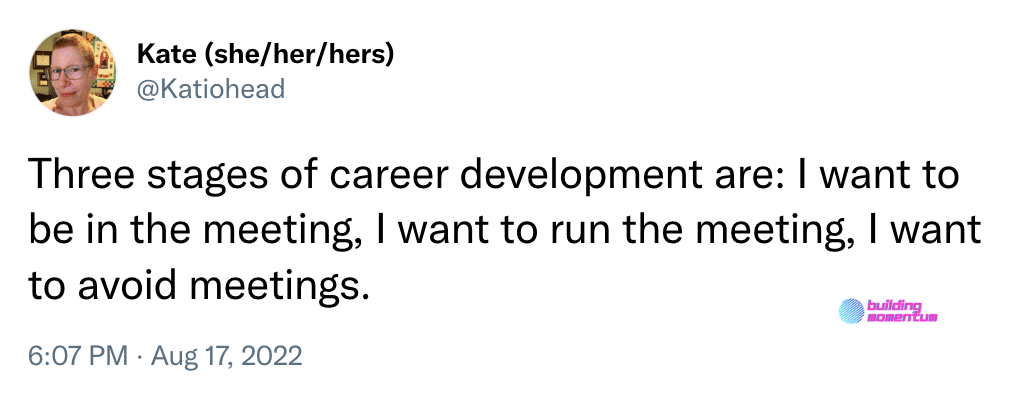Hey there. This is The Overview, a weekly roundup of noteworthy B2B SaaS stuff. You’ll find interesting thoughts, articles, and more from around the internet.
SPONSORED
Let your future customers come to you with Plezi One
? Looking to acquire new users for your SaaS? Create forms and magnets to generate leads, then engage them through automation and email campaigns with Plezi One. Plezi One is a web marketing toolkit that helps you focus more on your product, and less on acquisition!
In this post:
Strategy deployment is the hard part
Anyone can come up with a great strategy that clearly sets out the diagnosis, forms apt principles for moving forward, and puts in action a number of aligned tactics.
Encouraging everyone in a business to move forward, to build momentum, is hard. Helping teams course-correct on strategy execution is excruciating. Keeping people accountable for aligned execution is political. Communicating nuance is confusing.
So you choose to have a looser strategy; a rough direction and plenty of a team autonomy.
Imagine multiple ships setting sail from Southampton, a port on the south coast of England. Each ship plots a course, destined for New York. Without communication, tracking, and guidance throughout the journey, any ships could end up in Brazil, Canada, and anywhere in between.
Now imagine that in your business. Sales go after one customer, marketing after another. Product build one type of proposition, but the CEO fundraises on another. It doesn’t work. You find inertia sets in, and things get harder.
Strategy is hard.
Nuanced communication isn’t effective at scale
The above thread from Dan Luu (click to read the full thing) states that he has seen nuanced communication work at startups, but not at scaling, growing businesses. And I agree.
At different high-growth businesses, I’ve seen CEOs and leaders try to message multiple things at once. Target customers, goals, objectives, visions.
And I don’t think it can be done. Driving focus on what the business should work on means the communicated message to the business should be be a) highly prioritized, b) extremely clear. The more people, the more likely it will be interpreted and miscommunicated.
Try to avoid using AND in your declaration of objectives. Communicate singular focus, even if that changes every 6-12 months.
What stage of your career are you at?
Thanks for reading! Let me know what you thought – find me on Twitter and LinkedIn.
P.S. If you’ve found value in Building Momentum, could you buy me a coffee? Here’s my tip jar – any support is gratefully appreciated!
P.P.S: If you enjoyed this post, will you share Building Momentum with your network?



